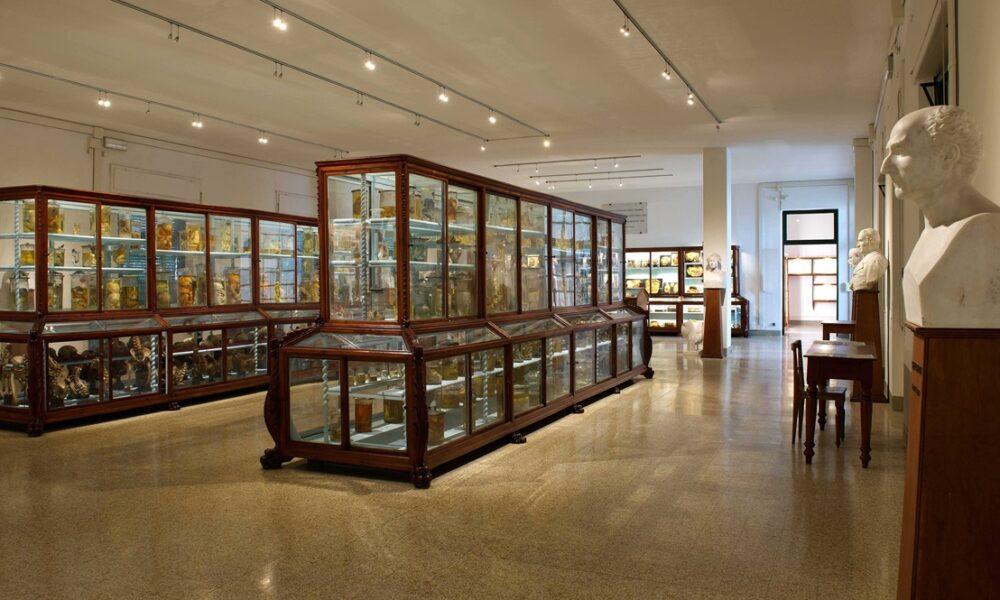Located in the Maude Abbott Medical Museum on the second floor of the Strathcona Building, Radiology of the abdomen for the surgeon showcases 10 works of embroidery, each depicting a different abdominal organ.
Split up between two glass cabinets, the exhibition appears unassuming at first, but, on second glance, it reveals beautiful depictions of the human body. It displays organs such as the spleen, the stomach, and the liver, among others, highlighting parts of the body hard at work in our day-to-day lives. A graduate student in biotechnology law at l’Université de Montréal, Catherine Tsatoumas manages to connect both the scientific and the artistic in a unique way that unites these two often disparate worlds.
“I started embroidery when I was a teenager in high school,” Tsatoumas revealed in an interview with The McGill Tribune. “For the past 20 years, I have been doing embroidery professionally, alongside my university studies.”
Radiology of the abdomen for the surgeon came about from her work with the McGill University Health Centre Patient’s Committee. The care and attention Tsatoumas devotes to her work shines through each piece, and, because she is a full-time student as well, each piece takes her a couple of months to complete. Tsatoumas has also taught Greek-Byzantine style embroidery in the Hellenic Communities of both Montreal and Ottawa. Reflecting this, the main stitchwork she uses in her embroidery is called the Byzantine stitch. The exhibit was stitched together from multiple different parts of her background and experience, creating the works people see today.
The true beauty of this exhibit is in its simplicity. Held in only two glass cabinets, the 10 pieces are beautiful in their minimalism. Each organ is carefully hand-sewn onto either turquoise or white silk squares, symbolizing surgeons’ scrubs and radiologists’ robes, respectively. The exhibit takes the inner workings of the human body, normally only pictured clinically in medical textbooks, and represents them in the vibrant medium of embroidery. The resulting work is both whimsical and captivating. Tsatoumas’ interest and expertise in both the human body and embroidery are put on full display.
One of Tsatoumas’ pieces, Radiology for the Surgeon, stood out in particular for its representation of the human abdomen. This piece attracts the eye with its bold, fanciful hand-stitched title and multitude of colours, from pulsing reds to silvery blues. Each organ stands out on the white background, shown in a creative, compelling way guaranteed to intrigue even the most hardened Arts student.
“[This is] a miniature collection of all the organs of the abdomen,” Tsatoumas explained. “This piece is supposed to be the introduction to the nine pieces of the collection. That is why it is so large, and it encompasses everything.”
Surrounded by medieval-looking medical tools, sections of brains in jars, and other scary, pointy medical instruments in the Maude Abbott Museum, Radiology of the abdomen for a surgeon offers viewers an alternative look into human anatomy: A warm, inviting exhibit complete with brightly coloured images and playful embroidered fonts. Tsatoumas hopes to continue doing similar work in the future, with plans to create a collage of ailments of the human breast and one of the ear.
“I would like for all to marvel at the human mind and how it can assimilate its functions and be creative,” said Tsatoumas. “After all, scientific inventions are geared by talented artists and, above all else, draw attention to the wholeness of the human body.” Radiology of the abdomen for the surgeon is on display at the Maude Abbott Medical Museum in the Strathcona Building until Sept. 23.








